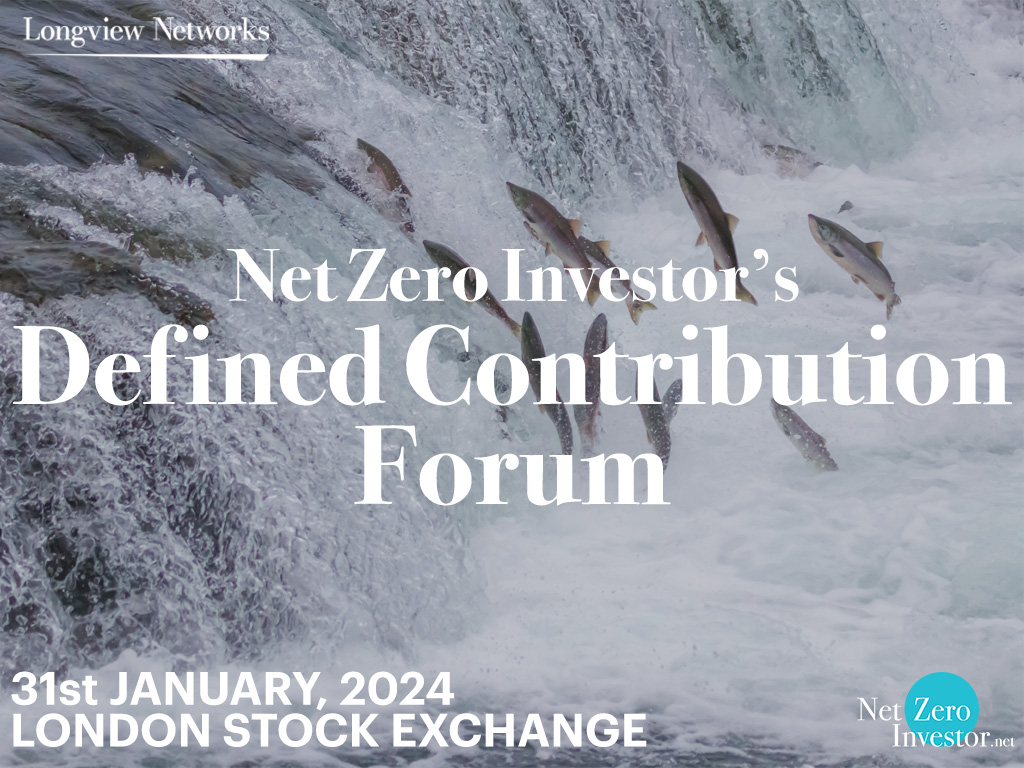
Smart Pension’s Fiona Smith: “We’re looking to make a positive biodiversity impact”
Pension funds don’t need to sacrifice returns to achieve a positive impact argues Smart Pension's Fiona Smith
As more and more pension funds look to make a positive impact on biodiversity with their investments, Net Zero Investor sat down with Fiona Smith, an investment proposition manager at Smart Pension, to talk about the fund’s approach.
Smart Pension is a UK-based defined contribution scheme with £4 billion under management, the master trust has more than doubled in size in the last two years.
Like many pension funds, Smart Pension first started considering biodiversity impact as part of its net zero strategy. Then, in 2020, after carefully considering the listed-equity and listed-bond impact fund offerings of around 40 different investment managers, the fund settled on AXA IM’s biodiversity-listed equity fund and a global green bond fund.
“Nature concerns and social concerns are an important part of our responsible investment policy,” she said. “We have undergone an evolution, starting with climate, then moving into nature and biodiversity and social concerns, and understanding the interlinks.”
Is biodiversity a separate strategy or is it still linked to your climate goals?
It is both. I don't think you can separate them because you can't save one without saving the other. They need to be looked at together. However, some investment strategies specifically target climate change while others focus on stopping or reversing biodiversity loss.
Why did you choose the AXA biodiversity fund?
When we started looking, we realised that biodiversity impact meant very different things to different managers. We wanted to achieve as much impact as possible and AXA’s biodiversity strategy seemed well-placed to do that while also providing appropriate risk-adjusted returns. This came as a relief because there weren’t and still aren’t a large number of truly impactful biodiversity funds that are suitable for institutional investors.
For example, some funds focus less on creating solutions than on picking companies that are looking to incorporate biodiversity concerns into their day-to-day operations.
In addition, some of the other options were more specific. For example, there were water funds that focused just on water. The AXA strategy, on the other hand, covers diverse areas, from land and animal conservation, to water, sanitation, and recycling. It aims to provide solutions to companies working in those areas that currently harm biodiversity. Solutions may include supporting alternative technologies or innovative recycling systems.
The wide spread also works for us from a risk management perspective. It can also be hard for trustees to prioritise one area over another. Our investments cover all sectors, and so it makes sense for our biodiversity strategy to be as broad as possible.
Have you made any private market investments?
We have made investments in private credit, such as our MV Dual Credit Fund, but not yet specifically for biodiversity, but that is the next stage of our biodiversity strategy. We’re trying to make sure we understand the market before we move into it. Private equity and infrastructure is where we would invest.
Our aim this year is to look into private asset classes.
How about timberland and sustainable forestry?
We've spoken to a few managers about it, but haven’t allocated any capital yet. The investment dynamics are still new for us. For example, deciding whether you hold on to carbon credits or sell them isn’t always straightforward. Understanding the impact on biodiversity can also be challenging. That said, we do have an indirect exposure to sustainable forestry through the AXA fund and our Mirova fund, which includes sustainable forest management companies.
How about sustainable and regenerative agriculture? The global food system is the single biggest driver of biodiversity loss.
We understand the importance of this sector. The AXA fund has a strong agriculture focus. Agriculture uses about 70% of global freshwater supplies and wastes about half of that. John Deere – one of the portfolio companies – is working on producing more efficient agricultural technology that would reduce water waste, biodiversity loss and carbon emissions.

When looking at an emerging asset class, to what extent does scale factor into your investment considerations? From a governance and transaction cost perspective, pension funds tend to prefer large investments over small ones.
Scale is definitely a major factor in our decision-making process.
We’re also very concerned with price points. We try to make sure that our members don’t have to pay more to invest in emerging asset classes than they would in traditional ones. To date, we haven’t increased our costs for introducing these types of investments in our default growth fund.
Some managers in the private markets space come with a hefty price tag. To make sure the investment makes economic sense, we try to find ways to reduce cost. For example, we own our own technology and can leverage this to create greater efficiencies and reduce costs elsewhere, such as those related to administration. That requires a degree of compromise from all parties. Managers seem willing to have those discussions, which is really positive.
How does Smart Pension manage that tension between short-term fiduciary duty to maximise returns and a long-term commitment to sustainability? For example, would you consider making a positive impact investment even if it meant a more challenging risk profile?
We believe you don’t need to sacrifice returns to achieve positive impact. We are looking for both impact and returns.
There are opportunities that achieve this, but it takes extra time, due diligence and work with managers to find them.
There might be a few more question marks for pension funds looking to enter the natural capital space, for the reasons I mentioned before. Are you selling the timber to make the profits or are you holding on to the carbon value and selling carbon credits? What are your assumptions on how much the carbon credits will increase in value?
It's great to invest in natural capital, and pension funds have the potential to make good returns from it, but they also need to find ways to keep their portfolio on track with their overall biodiversity and climate-related transition goals.




